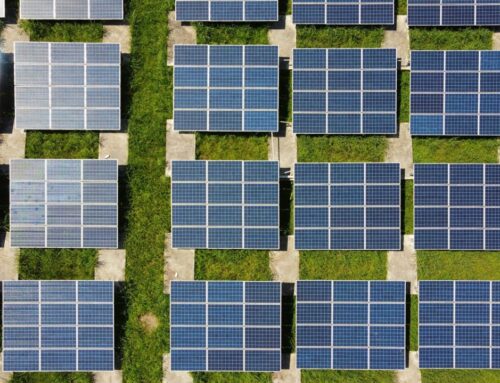Adding Clean Energy To The Grid Can Help With Affordable Electric Bills For American Famil
May 6, 2025
Many American families have been feeling the pinch of rising costs lately. Prices for everyday necessities from rent and housing to groceries have been increasing in recent years, and slowed spending has economists keeping an eye on recession forecasts.
But in Oregon, 150 households are catching a break—a $40 drop in their monthly electric bills.
The lower bills are thanks to a new community solar project near the Portland airport, designed to help those who are the most financially vulnerable. Community solar projects are just one example of a tool that can expand clean energy on the grid while offering relief to American families.
And American families need that relief. The average U.S. household spends about $136 a month on electricity, with costs expected to keep going up. As a former Senator, I know that when hardworking Americans are caught between putting food on the table and keeping the lights on, it is up to policymakers to take action.
So, how do we make electric bills more affordable? The answer is complex, because electric bills are complex. The bottom-line on a household bill is influenced by much more than the type of electricity on the grid. It can be affected by the times of day you use electricity, supply chain costs, local energy regulations—even the weather can increase your electric bill.
Adding clean energy, like wind and solar, to the grid can help counterbalance some of these costs. Sometimes—like in the case of the Portland community solar project—a clean energy project can result in an immediate bill drop. But the way clean energy can usually help is by hedging against steep swings in energy prices.
Much like a well-rounded financial portfolio, a diversified energy portfolio helps reduce exposure. Traditional fuel sources have prices that fluctuate based on market forces—much like stocks. Clean energy offers more predictability. By reducing reliance on volatile energy sources, renewables help insulate against sudden price spikes, creating more economic stability and resilience.
We have a great opportunity to build more price-stabilizing clean energy. With recent growth in manufacturing and a boom of new innovative industries, like AI data centers, Americans will be using an unprecedented amount of electricity in the coming years. After two decades of flat demand, we saw the beginnings of electric demand growth last year.
Clean energy is key to meeting growing demand affordably. In many parts of the country, wind and solar are the cheapest forms of electricity. Even in recent times with high interest rates, renewables remain cost-competitive with conventional generation. Their advantage comes from running on free resources: the wind and the sun. Plus, technologies have advanced over the past couple decades, leading to greater efficiency and longer lifespan.
And yet, even with more renewables being added to the grid, electric bills are still increasing. We don’t yet have enough clean energy on the grid to see their cost-stabilizing effects.
That is why policies must encourage more clean energy development. Federal policies, such as clean energy tax credits, are currently under threat. But these tax credits are critical to helping Americans with household expenses.
A new report from CEBA finds that without clean energy tax credits, annual household electric bills could increase by $110. Research from Energy Innovation tells us that without clean energy tax credits, cumulative household energy costs would increase by $32 billion annually through 2035. And since renewable energy reduces harmful emissions that are linked to respiratory and cardiovascular diseases, like asthma, there is potential to save $77 billion in healthcare expenses annually.
Keeping tax credits in place has enormous economy-wide benefits. Economic research from The Nature Conservancy finds that each year from now until 2032, these credits will increase employee wages across the U.S. by $16 billion, add 285,000 jobs and provide more than $4 billion in federal, state and local tax revenue.
It’s not just federal policies though—state policies are just as important. The solar project in Oregon was made possible by a state policy that establishes a community solar program. Other states, such as Washington and Illinois, go a step further by funding these types of programs and making them available to those who are struggling the most financially.
Policies must make clean energy possible. We have 2,600 gigawatts of electric generation projects waiting to be built. Over 95% of these are wind, solar and battery storage projects, enough to power millions of homes each year.
Clean energy is about economic security for American families. Wind and solar projects grow jobs, increase wages for hardworking people and help take the pressure off of rising electric bills.
At a time when financial strain is top of mind, clean energy can real economic relief—a solution we cannot afford to ignore.
The author serves as global board chair of The Nature Conservancy.
Search
RECENT PRESS RELEASES
Related Post



